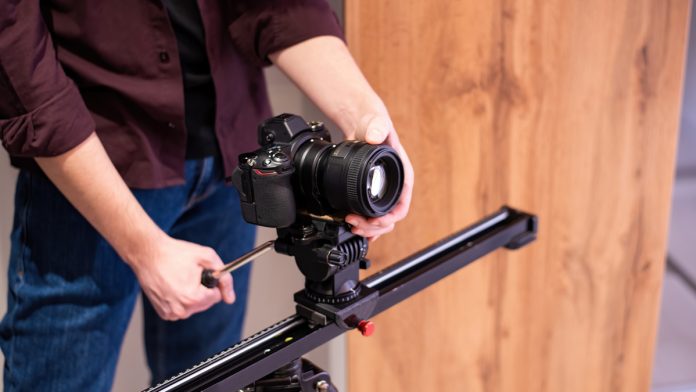The innovative blend of modern electronics with mechanical precision forms the backbone of these systems. The Electronics and Technology Behind Automated Follow Focus System drives seamless performance during filming, enhancing visual storytelling with minimal manual intervention. This article dissects core components, from high-precision sensors to advanced control algorithms, illustrating their critical roles in achieving the smooth, adaptive focusing required for high-end cinematic equipment.
| Table of Contents | |
|---|---|
| I. | High-Precision Encoder Integration |
| II. | Advanced Sensor Fusion |
| III. | Precision Servo Motor Control |
| IV. | Embedded Microcontroller and DSP Integration |
| V. | Control Algorithms (e.g., PID and Adaptive Control) |
| VI. | Closed-Loop Feedback Systems |
| VII. | High-Speed Data Communication Protocols |
| VIII. | Signal Conditioning and Analog Front-End (AFE) Design |
| IX. | Power Management and Regulation |
| X. | Printed Circuit Board (PCB) and System Integration |
| XI. | Firmware and Over-the-Air Update Capabilities |
High-Precision Encoder Integration
High-precision encoder integration is essential for accurate position tracking and focus adjustment in Automated Follow Focus Systems. These encoders deliver real-time angular position data crucial for synchronizing lens movements with frame capture. Their integration enhances system responsiveness and assures steady focus during rapid shooting sequences. In this context, implementing Electronics Behind Automated Follow Focus System methodologies improves performance reliability, ensuring the cinematic equipment meets demanding professional standards.
Advanced Sensor Fusion
Advanced sensor fusion combines inputs from multiple sensing elements, gyroscopes, accelerometers, and optical sensors, to refine focus accuracy in Automated Follow Focus Systems. By merging data effectively, sensor fusion minimizes errors and delivers robust control under variable lighting and motion conditions. This integration supports precise lens adjustments during complex camera maneuvers, aligning with the Technology Behind Automated Follow Focus System approach that enables smarter, adaptive focusing in today’s cinematic workflows.
Precision Servo Motor Control
Precision servo motor control is vital for adjusting lens focus mechanisms swiftly and accurately. These motors, driven by refined control signals, ensure that focus transitions occur smoothly, matching rapid scene changes and varied object distances. Within Automated Follow Focus Systems, the tight integration of motor control guarantees that lens adjustments are both rapid and precise, ultimately elevating the quality of live filming and cinematic production.
Embedded Microcontroller and DSP Integration
Integration of embedded microcontrollers and digital signal processors (DSP) empowers Automated Follow Focus Systems with real-time computation and control. This synergy enables rapid processing of sensor data and execution of complex algorithms, providing the system with immediate responses to shifting focus demands. Implementing “Electronics Behind Automated Follow Focus System” strategies here ensures that the embedded hardware and firmware work harmoniously, delivering optimal performance in smart cinematic equipment.
Control Algorithms (e.g., PID and Adaptive Control)
Robust control algorithms, such as PID and adaptive control methods, are fundamental in achieving precise and stable focus adjustments in Automated Follow Focus Systems. These algorithms process sensor feedback to continuously correct lens positioning errors. Their application ensures that focus remains sharp, even in rapidly changing filming conditions. The refined computation reduces overshoot and minimizes latency, resulting in a smooth, cinematic visual experience that satisfies the high standards of professional equipment.
Closed-Loop Feedback Systems
Closed-loop feedback systems continuously monitor focus performance by comparing desired outcomes with actual results. In Automated Follow Focus Systems, this feedback is critical for self-correction and dynamic adjustments during filming. The real-time control loop enhances focus precision, enabling the system to adapt instantly to movement or environmental changes. Such systems, integral to smart cinematic equipment, uphold reliability and accuracy on set, ensuring that every shot is perfectly in focus.
High-Speed Data Communication Protocols
High-speed data communication protocols facilitate rapid and reliable information exchange between sensors, controllers, and actuators in Automated Follow Focus Systems. These protocols ensure that high volumes of data are processed with minimal delay, promoting swift adjustments in focus tracking. With efficient communication channels, cinematic equipment achieves seamless integration of real-time control commands, ultimately enhancing the overall response time and accuracy of the follow focus mechanism.
Signal Conditioning and Analog Front-End (AFE) Design
Signal conditioning and AFE design are crucial for filtering and amplifying sensor outputs in Automated Follow Focus Systems. These circuits optimize raw analog signals for digital processing, ensuring that the focus control system receives accurate input data. High-quality AFE design reduces noise and distortion, supporting the precise and reliable operation of smart cinematic equipment. The resulting clarity in signal processing is pivotal for maintaining flawless focus during dynamic shooting scenarios.
Power Management and Regulation
Power management and regulation ensure that all electronic components in Automated Follow Focus Systems receive stable and efficient power. This is critical for maintaining performance in professional cinematic equipment where energy fluctuations can affect system response and focus precision. Efficient power regulation mitigates thermal issues and optimizes energy consumption, thereby guaranteeing that the follow focus system operates reliably under various shooting conditions and high operational demands.
Printed Circuit Board (PCB) and System Integration
Printed circuit board design and system integration bring together the diverse electronic components that form the Automated Follow Focus System. Meticulous PCB layout minimizes interference and signal loss, contributing to the overall stability of focus control. Effective integration ensures that sensors, processors, and actuators operate as a cohesive unit, which is essential for achieving the high performance expected in smart cinematic equipment. Every component is designed to support the system’s rigorous demand for precision and durability.
Firmware and Over-the-Air Update Capabilities
Advanced firmware with over-the-air update capabilities enhances the longevity and functionality of Automated Follow Focus Systems. This feature allows for remote modifications, performance enhancements, and bug fixes without interrupting on-set production. Regular firmware updates ensure that the system remains at the cutting edge of performance, incorporating improvements that align with the evolving needs of smart cinematic equipment. The Technology Behind Automated Follow Focus System is reflected in these adaptive software practices, ensuring continuous system innovation.

